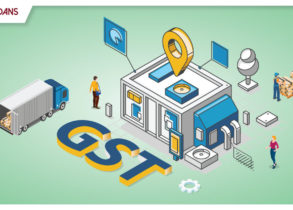Apr 14, 2020
Jul 24, 2025

The unprecedented apocalypse type of situation that has triggered fears of economic depression has also forced the government to allow extreme fiscal measures. The COVID 19 outbreak has prompted the Reserve Bank of India to announce a moratorium on Term loans for three months from March 1st 2020 till May 31st 2020. The banks have been scrambling to put across the message to their customers and get their acceptance to the relief offered.
What does deferment mean to the borrower?
The package has offered a deferment of all EMIs on Term loans like Business loans, Agricultural loans, Personal Loans, Mortgage Loans, Cash/credit overdrafts and loans under Pool purchases. Credit cards are also covered under the loans head. All payments that are scheduled between 1st of March to 31st of May, 2020, have been targeted by the Apex bank. Option to adhere to the moratorium is given to the particular bank whether it should implement the order. All nationalized banks are in sync with the order and so are most of the private banks.
Should you consider moratorium for your EMIs?
Although the scheme that has been announced promises relief to the borrower, there are some pros and some cons to be taken into account.
- You can defer the EMI payments, but the meter on the interest will be ticking. It is important to remember that the grace period is for payment only; it is not a loan waiver in any way. The interest component will have to be paid across the loan tenure, and lender will be the decision-maker in how to reschedule the payments in the future. Business revenues are nil at the moment, so this deferment can help the entrepreneur tide over the lean period.
- The interest component will be added on the cash/credit and credit card loans to be paid after May 31st, 2020. The unapplied interest amount will be added to the Loan amount and recovered in due course by the lender.
- All the options set forward by the RBI are to add interest due in full to the next EMI, increase the tenure of the loan, or increase the amount of each EMI. You can choose the option that suits you best. The lender will set forward the terms and conditions of the transaction and give you a choice in due course of time. The best choice is to add the small extra amount to the EMI, as a couple of hundred rupees will generally not be too big a burden for you.
How the equation will pan out?
Let us try to understand the equation with a live example. If you have taken a business loan of Rs 30 lakhs with a remaining tenure of 15 years, the interest component works out to be about Rs 2.34 lakhs or approximately 8 EMIs. You will be in a position to have working capital when the lockdown is over.
The RBI has not given the average loan holder any interest waiver; the cumulative interest will be ultimately payable in the hands of the loan holder. Interest immunity is limited to a time coordinate, not amount coordinate. This is beneficial only when you have a liquidity crunch and are unable to pay the amount due.
If your loan is new it might be a good idea to take the offer, as the EMIs across the tenure would have a very minor increase and you would be retaining liquid cash in your hands during these emergent times. But, if you are in a position to pay as usual it is a better strategy to pay than to accumulate a bigger burden to pay later.







